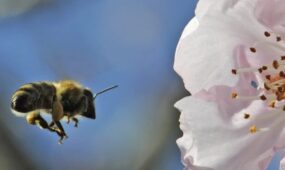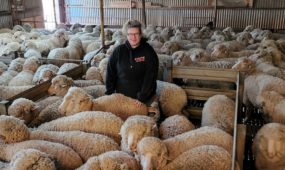Brewing up a crafty expansion
Primary Industries
BUILDING an efficient packaging and distribution plan before opening its doors is proving as important as making a high quality product for one of Australia’s fastest growing craft breweries.

Sign up to receive notifications about new stories in this category.
Thank you for subscribing to story notifications.
BUILDING an efficient packaging and distribution plan before opening its doors is proving as important as making a high quality product for one of Australia’s fastest growing craft breweries.
Pirate Life Brewing has grown seven-fold in its first 18-months of operation and is preparing to ship its beers to international markets.
launched in Adelaide in March 2015 with three staff and 17,000 litres of packaged beer. It now employs 21 people and ramped up production to 485,000 litres in 2015/16 leading to about $3.5 million in sales.
It expects to produce 1.2 million litres in 2016/17, generating sales of about $8.5 million.
Pirate Life has just taken delivery of an additional four 5000-litre fermenting tanks. Another five 5000-litre tanks and a 10,0000-litre tank are expected to arrive from China in October.
The new tanks have increased capacity to 750,000 litres while the next stage later this year will boost capacity to 1.2 million litres. A further push in 2017 will take the brewer’s capacity to 1.7 million litres a year.
“We’ve been surprised at the growth, when you start a business you sort of wish and hope but certainly we’ve gone better than we hoped,” Pirate Life CEO Mick Cameron said.
“Increasing the number of fermenters allows us to increase our volume but the other big thing we did was we went to 24-hour brewing in March this year so our brewing schedule starts at 7 o’clock on a Sunday night and runs 24 hours a day through to a Thursday night or Friday morning depending on how our fermenters are doing.”
Pirate Life has just bought the property next door to its base in the inner-city Adelaide suburb of Hindmarsh and is busy converting it into a packaging facility with a second canning line to free up space in its increasingly crowded main brewing shed.
Cameron moved to Adelaide with West Australian brewers Red Proudfoot and Jack Cameron (Cameron’s son) to start the business in 2014.
He said Adelaide’s central location and thriving small bar scene, coupled with the decision to package Pirate Life beer almost exclusively in cans had been big factors in helping the brewery quickly reach its goal of having distribution in every Australian state.
“Adelaide’s a central point for production and distribution, beer will leave this brewery today and it can be in Melbourne overnight, it’ll be in Sydney the next day and Brisbane and WA in two days. We ship all of our beer refrigerated so if we can keep it cold and fresh then when people buy it at the bottle shop or the pub they are drinking it in its best possible condition.”
Cans are cheaper to transport because of their lighter weight, faster to chill, limit light and oxygen exposure, are easily recycled and cost less to produce.
The brewery has also this month started doing its own distribution nationally in Australia and is establishing distribution channels to begin exporting beer to New Zealand, Hong Kong and the United Kingdom before the end of the year.
“We’re working with an importer in each of the countries and they’ll import and distribute but each of those things take time to set up,” Cameron said.
“I think we’ll be received pretty well, already the feedback we’ve had on social media has been phenomenal – I had three emails yesterday from the UK to find out where they can buy our beer and we’re not even there yet. We’ve had a similar reaction from New Zealand.”
Pirate Life is best known for its flagship West Coast style American Pale Ale and IPAs, which are in 840 retail outlets and 275 pubs, bars and clubs across Australia.
It won Champion Small Brewery at the Australian International Beer Awards in May and was last month crowned Champion Large Brewery at the Craft Beer Awards in Brisbane, where it also won the title of Champion Pale Ale. It also won a swag of prizes at the Royal Adelaide Beer & Cider Awards in July.
Pirate Life has teamed up with the Barossa Valley’s Tomfoolery Wines for a bottle-aged series, which will include a Black Ale aged in Tempranillo barrels, a Saison in Grenache and a Stout in Shiraz barrels.
It has recently released a mid-strength 3.2 per cent Porter in kegs and plans to have the product available in cans in time for the Australian summer.
“Because we’ve slotted ourselves in a space in the market – we’re big, bold, West Coast style American pale ales and IPAs – people that understand that style of beer really want to get out and drink it and I think we’ve been able to partially lead the way,” Cameron said.
“We’re still not fully entrenched in Sydney, Melbourne or Brisbane. We’re still not fully entrenched in Adelaide for that matter.
“There’s a myriad of opportunities in just continuing to grow the market we’re in, continuing the education and getting brand awareness out in the market. Previously we haven’t had the capacity to deal with Coles and Woolworths so that’s something we’ll have to look at further down the track.”
The Pirate Life name helped ensure fun was always pretty high on the agenda, Cameron said.
“It’s not about eye patches and parrots on the shoulders, it’s more about the lifestyle we lead, having a crack and having fun,” he said.
“Once people see that you are passionate about what you do, that goes a long way.
“The food situation in South Australia continues to go from strength to strength as does the wine so it’s a good place to be,” Cameron said.
South Australia’s beverage industry is continuing to gain momentum.
The Vintage Report 2016, released last month in Adelaide at the 16th Australian Wine Industry Technical Conference & Trade Exhibition showed South Australia contributed 51 per cent of this year’s national grape crush.
The state’s distillers are also performing well with gin and spirits labels shining in major national competitions.
Video courtesy of Simon Christie.
Jump to next article



